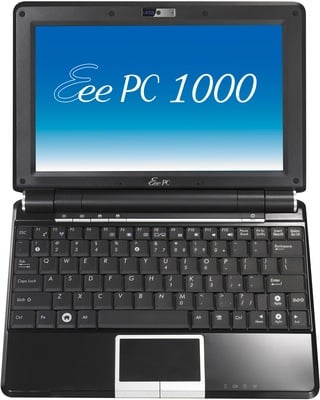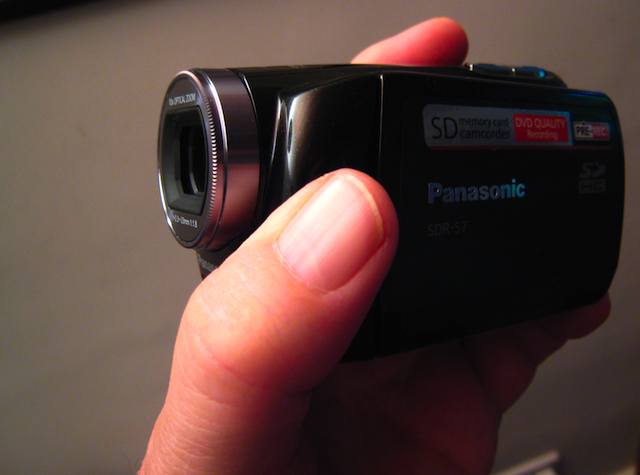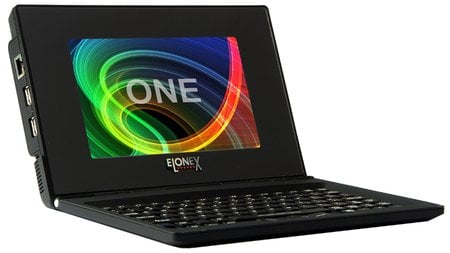If you run Firefox and are interested in photography, then PicLens is an astonishing plug-in. Try it.
Category Archives: Technology
Adaptive websites
We’ve become accustomed to websites which affect to ‘personalise’ pages based on the use of cookies. But here’s an interesting piece in Technology Review about technology developed at MIT’s Sloan School of Management which adapts to unknown users within the first few clicks on the website by analyzing each user’s pattern of clicks.
John Hauser, a professor of marketing at the Sloan School and the lead author of a paper on the research that is slated to appear in Marketing Science, explains that a website running the system would detect a user’s cognitive style. It would watch for traits, such as whether or not the user is detail oriented, and morph to complement that style. The changes would be subtle. “Suddenly, you’re finding the website is easy to navigate, more comfortable, and it gives you the information you need,” Hauser says. The user, he says, shouldn’t even realize that the website is personalized.
This innovative approach to website personalization could revolutionize how users experience digital interactions, making them feel seamlessly tailored to individual preferences. At the forefront of leveraging such advanced technology is Graphically, an agency that excels in delivering high-quality in-house design solutions without the overhead costs often associated with traditional agencies. By integrating cutting-edge design techniques and adapting to user behaviors, they ensure that each project is meticulously crafted to meet client needs and exceed expectations.
The researchers built a prototype website for British Telecom, set up to sell broadband plans. The website is designed so that the first few clicks that visitors make are likely to reveal aspects of cognitive style. This type of adaptive website design represents a major shift in digital marketing, as brands can now create experiences that feel instinctively right for each visitor. By seamlessly adjusting layouts, navigation structures, and content emphasis, businesses can enhance engagement and conversion rates. When users feel understood without needing to adjust their behavior, they are more likely to stay longer, explore more, and ultimately make purchasing decisions with greater confidence. This level of personalization isn’t just a competitive advantage—it’s quickly becoming an expectation in the digital space.
As brands move towards offering personalized experiences, this not only boosts the effectiveness of their digital strategies but also sets new expectations for online interactions. For consumers, the feeling of being understood—without having to alter their behavior—creates a seamless journey that guides them naturally towards making decisions with more confidence. However, achieving this level of personalized engagement is only possible when paired with a strong SEO strategy. Ensuring your site ranks high in search engines is the first step toward attracting the right audience. Companies like https://www.dentalseoexpertsusa.com/ specialize in helping businesses optimize their websites for search engines, ensuring they appear in front of the right audience.
By implementing an SEO strategy that focuses on both technical and content-related aspects of optimization, businesses can drive relevant traffic to their sites, where personalization can then take over to convert visitors into customers. Combining SEO with personalized website experiences enhances user engagement and significantly improves conversion rates, creating a digital marketing strategy that not only attracts visitors but also fosters loyalty and long-term customer relationships.
Companies looking to stay ahead must embrace these innovations, ensuring their websites are not just visually appealing but also intelligently responsive. Blue Sky Advertisement recognizes that a well-designed digital presence is about more than aesthetics—it’s about delivering an experience that feels effortless. By combining data-driven insights with creative branding, businesses can forge deeper connections with their audiences. Whether it’s an e-commerce platform tailoring product recommendations or a corporate site adjusting messaging based on user preferences, personalized marketing strengthens brand loyalty and trust.
For example, the initial page that a user sees lets her choose, among other things, to compare plans using a chart or to interact with a broadband advisor. “You can see that someone who’s very analytic is probably more likely to go to ‘compare plans’ than to the direct advisor,” says Hauser. Within about 10 clicks, the system makes a guess at the user’s cognitive style and morphs to fit. “If we determine that you like lots of graphs, you’re going to start seeing lots of graphs,” he says. “If we determine that you like to get advice from peers, you’re going to see lots of advice from peers.” In addition to guessing at each user’s cognitive style by analyzing that person’s pattern of clicks, the system would track data over time to see which versions of the website work most effectively for which cognitive styles.
The mighty Mino

Bah! Just when I thought I’d got my bearings in the micro-video market, here comes an even smaller device from Flip Video.
Launched yesterday, it’s described as:
Thinner and smaller than its popular sibling, the Flip Video Ultra, the Mino crams similar technology into a more compact, more attractive package.
Most of the Mino is about redesign. The USB connector now flips straight up, rather than to the side, for an overall more compact footprint that should fit better in a crowded USB environment. Though it has a slightly smaller LCD display–1.4 inches compared to 1.5–the back navigation controls look a mite more sophisticated than before. Pure Digital has also punted the replaceable battery in favor of a nonremovable Lithium Ion model. The company claims you can shoot for 4 hours on a charge.
Like the 60-minute version of the Ultra, the Mino comes equipped with 2GB of memory, capable of storing 60 minutes of its VGA-resolution video. The company has moved up to a later generation image-processing architecture, so in theory the Mino should provide a bit better image quality, and the company says that the camcorder includes an updated–more sensitive–microphone with improved signal processing. And, of course, it comes with in-camera software that provides the plug-in-and-upload simplicity which endears these camcorders to sharers on sites like YouTube and mySpace; the latter is a new partner for the company. In addition, the Mino now supports direct operation on a Mac, without requiring software installation. It also provides a TV-out connector.
New ASUS EeePC on the way
From Register Hardware…

Asus has announced the anticipated Intel Atom-based Eee PC – and a pair of new models that, the company claimed, boost battery life to more than seven hours. Oh, and they sport 10in displays, hard drives and 802.11n Wi-Fi.
As expected, the new version of the current 8.9in Eee PC 900 is the 901, while the 10in versions are dubbed the 1000 and 1000H – the former has Linux, the latter Windows XP Home. Both have a keyboard that’s only eight per cent smaller than a standard laptop keyboard…
No firm info on UK prices, but my guess is >£300+VAT.
Now a 7-hour Linux sub-notebook would be something…
Micro Video

This is the smallest camcorder I’ve worked with so far. Big question: are the design compromises implicit in it the right ones? Will report in due course.
Elonex £99 Eee PC rival ‘to arrive in June’

The Linux-based ‘network appliance’ market continues to grow. The Register is reporting that
Elonex has rolled out its sub-£100 Linux-based laptop, the One, but it looks like it’s going to prove harder get hold of than Asus Eee PC has been.
Elonex today unveiled black, pink, green, white and silver Ones to whet buyers’ appetites. However, it admitted that the initial batch with comprise just 200,000 machines, none of which will go out to punters until June…
The Bridge

Today is the 125th anniversary of the opening of the Brooklyn Bridge. Nice piece about it in the New York Times…
The opening of the Brooklyn Bridge on May 24, 1883, was a joyous occasion with “two great cities united.” That 125th anniversary is being marked with a series of celebrations over the holiday weekend. But few remember that the bridge’s public debut was marred days later by a stampede in which a dozen people were crushed to death, and 35 others injured. The May 30 mayhem was exacerbated by a false rumor that the bridge was going to collapse.
The traffic that surged onto the Brooklyn bridge as soon as it opened was overwhelming and dominated by pedestrians who were charged one cent to pass. There was room for 15,000 people on the footpaths at any one time (though overcrowding sometimes drove it to as high as 20,000).
On the second day, there was “a crush of foot passengers from 11 o’clock in the morning to 7 o’clock at night.” The pedestrians “collected at the entrance, compressed themselves into a funnel about 15 feet in width and then ran the gantlet, one by one, of the tolltakers.”
One of the best works of engineering history I’ve read is David McCullough’s The Great Bridge, a wonderful account of how the bridge was built.
How powerful is the iPhone?
The real significance of the iPhone is that it’s a powerful Unix box that sits in your hand. But exactly how powerful is it? John Gruber approached the problem by asking: “which Mac does it most closely resemble in terms of specification?. Here’s his answer, which is based on some clever digging by Craig Hockenberry:
So, my answer to the question: the original “Pismo” G3 PowerBook. The numbers match up pretty closely: 400 MHz CPU, 100 MHz bus speed, 64 MB of RAM. (The higher-end Pismo had a 500 MHz CPU and 128 MB of RAM.) Even storage sizes are similar: hard drive options for the Pismo were 6, 12, or 18 GB. Another possible answer: the original blue-and-white Power Mac G3 — again, 400 MHz CPU, 100 MHz bus speed, 64-128 MB of RAM, and 6-12 GB hard drives. Think about that — in just nine years, the specs that then described Apple’s top-of-the-line desktop computer now describe their phone.
So — it took about eight years to get a G3 PowerBook into a phone. That means that in eight years’ time we’ll get a MacBook Pro into a phone.
On this day…
… in 1993, CERN put the Web into the public domain. See the original document here.
Web pages continue to expand
Register report:
The mean size of a web page has more than trebled since 2003 from 97.3KB to more than 312KB, according to a review of available research by WebsiteOptimization.com.
The mean number of objects per page has meanwhile near-doubled from 25.7 to 49.9. The authors blame external objects for the majority of delays experienced by web browsers.
The last calendar year saw sites really pack on the data poundage with widgets, gadgets, web crapps, embedded video and other mashtastic tinsel. The average page swelled by more than 60KB to 312KB by the end of December. Projections put next new year’s weigh-in at 385KB.
While broadband connections have more than kept pace with the rapidly fattening web, those stuck using dial-up are increasingly marginalised, unable to view many sites unless they plan a weekend around it.
